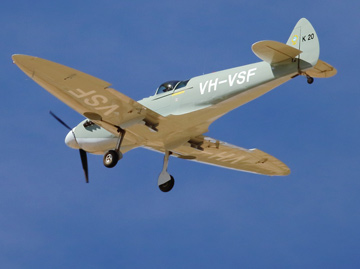
A scale-replica Spitfire aircraft had just been flown in an air display when it crashed in a factory car park.
The ATSB is urging owners and pilots of amateur-built aircraft to enhance their chances of avoiding a stall, after an accident at Parafield Airport in South Australia left an aircraft substantially damaged and the pilot dead.
The owner-pilot had built the Spitfire from a kit and operated it in the experimental airworthiness category. On 17 March 2013, he was participating in an antique and classic aircraft air display at Parafield Airport, South Australia. He performed a number of airborne passes above the runways in various directions and completed the display with a slow speed pass at 400 ft with the landing gear and some wing flap extended.
Towards the end of this pass, the pilot radioed the tower to coordinate a landing. He turned right then left and, soon after, a wing dropped, and the aircraft entered a steep descent. Some witnesses noticed a degree of spiralling before the aircraft descended out of sight. The aircraft crashed into a factory car park.
The ATSB is encouraging owner-pilots to consider the benefits of a stall warning device, preferably with aural output.
The ATSB found that while coordinating the landing clearance with air traffic control and flying a low-level circuit with a close downwind and base in turbulent conditions, the pilot inadvertently allowed the airspeed to decay. As it turned, the aircraft aerodynamically stalled, descended steeply, and impacted the ground. The aircraft was prone to aerodynamic stalling with little or no aerodynamic precursors, and it was not fitted with a stall warning device, increasing the risk of inadvertent stall.
Although amateur-built aircraft operated in the experimental category are not required to be fitted with a stall warning device (preferably with aural output), the ATSB is encouraging owner-pilots to consider the benefits of such devices as a last line of defence against stalling.
Pilots should also recognise that flying in an air display is different to normal operations and involves additional demands. Pilots who participate in air displays should consider these extra demands and, to the extent possible, ensure that the complete sequence, including landing, is planned and rehearsed.
Read the final report: Loss of control involving scale-replica Spitfire, VH-VSF, near Parafield Airport, South Australia, on 17 March 2013


